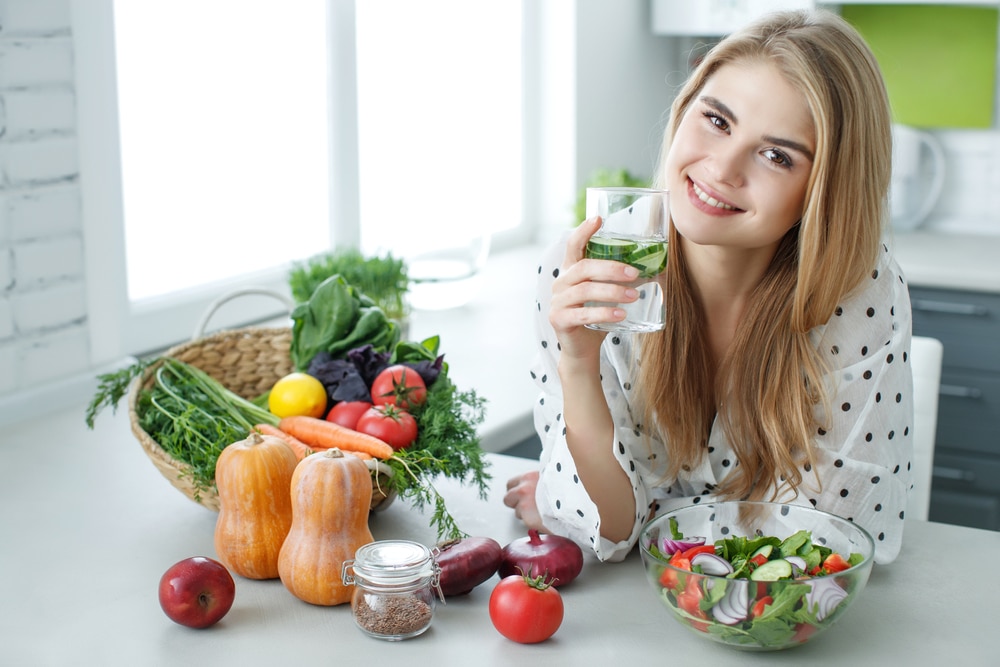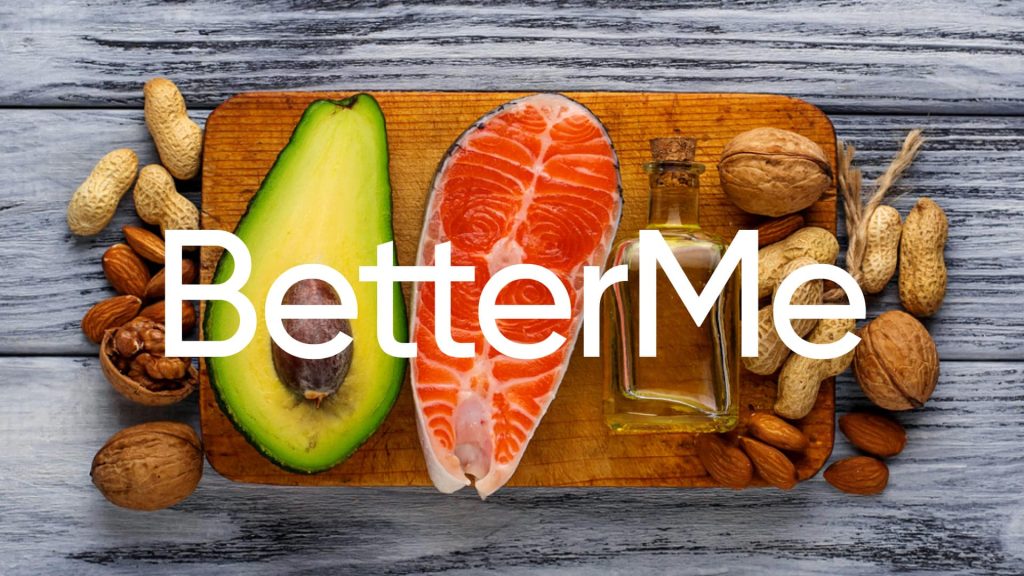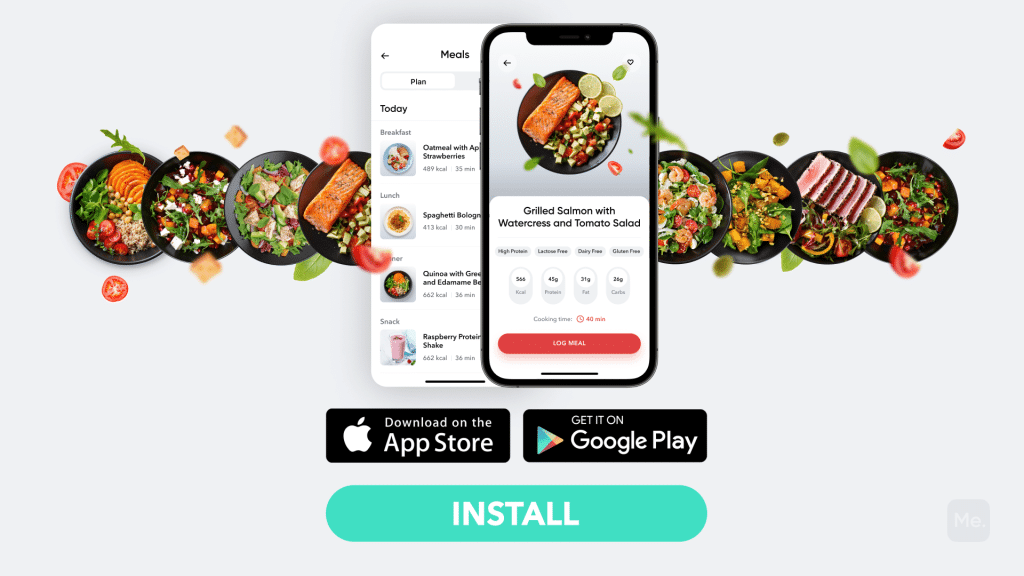Whenever we hear about calorie dense foods, we associate them with all things bad, including increased risk of weight gain, obesity, and hypertension. But what is the actual truth about high-calorie foods? Is it possible to eat calorie dense foods and lose weight?
Get your personalized
meal plan!
Every individual has a different goal when it comes to weight. Some want to gain more weight, while others want to lose some. To be able to do so, one needs to find the correct weight management principle to follow. But what is the healthy way to do either of the two, and how is calorie density involved?
Here we explore all the facts about calorie dense foods and their impact on weight gain and weight loss.

What Are Calorie Dense Foods?
Calorie density refers to how much energy is provided per unit measure of food. In simpler terms, it is the number of calories in a given volume of food usually measured as calories per 100 grams (Approx. 3.5 ounces). The more the number of calories a certain amount of food contains, the higher the calorie density. Calorie dense foods also called high energy-density foods, provide many calories in a small number of foods.
It is important to note that calories are a unit of energy, and the body needs energy to function properly. The body needs energy for metabolism, proper brain function, muscle activity, and more. Different people require different amounts depending on sex, age, activity level, and body size. The empty calories found in foods that are very calorific but have no nutritional value eventually result in weight gain.
-
Low-Calorie Dense Foods
Foods with low energy density are considered to have more bites. That is, you can eat them in larger volumes for longer but compared to high calorically dense foods. For instance, there are just 57 calories in 100 grams of berries (2), while 100 grams of peanuts pack up to 567 calories (10). So, for every 100 grams of peanuts, you would have to eat 9 times as many berries to get the same amount of energy. Low calorie density foods include vegetables, fruits, and starchy carbs such as potatoes, legumes, and low- or non-fat dairy products such as non-fat milk and low-fat yogurt. This is mainly because the least calorie dense foods have high water and fiber content (6).
Read More: Top Zero Calorie Foods That’ll Help You Keep The Number On The Scale In Check
-
High-Calorie Dense Foods
On the other hand, high caloric density foods contain more calories per serving. Foods with high-calorie density include fatty meats, fast foods, cakes, high-fat dairy like butter, cheese and cream, candy, and foods with a lot of chocolate and sugar in them. Note that there are high calorie nutrient dense foods like avocados, nuts, and olive oils. Most calorie-dense foods are very easy to overeat, so be on the lookout for them. However, much as low energy-dense foods tend to be rich in nutrients, many foods with high caloric density are also important because they contain antioxidants, proteins, and unsaturated fats (6).
1. What Are The Most Calorie Dense Foods – List
So which foods have the most calorie density? Here is a detailed list:
- Fatty meats: Fatty meats like bacon, beef, lamb, and pork have more saturated fats and have more calories than lean meats like chicken and fish.
- High-fat dairy foods: These include cheese, butter, and cream and are very calorific.
- Nuts: Nuts are a source of healthy fats and contain a lot of protein and fiber but are also caloric. While they are very nutritious, eat them in moderation. Common types of nuts include: cashew nuts, peanuts, macadamia nuts, walnuts, hazelnuts and
- Oils: Some oils such as olive, avocado, and coconut oils contain a lot of calories even though they are considered to be healthy oils.
- Cakes, pastries, and candy: Cakes, candy, and pastries contain a lot of sugar and are very calorific. And given that these foods are extra sweet, it is easy to overeat.
- Fast foods: These types of food are a favorite of many because they are inexpensive and convenient. Studies indicate that fast foods pack twice as many calories (5) compared to a regular healthy meal.
- Sugary beverages: Most sugary drinks like sodas, energy drinks, and other carbonated soft beverages contain many empty calories and have little to no nutritional value.
2. Why Are Some Foods Calorie Dense But Not Filling?
Certain types of foods are more filling than others and maintain the feeling of satiety longer than others. Consuming foods that satisfy hunger helps control calorie intake. Eating a meal that satisfies hunger reduces portion size and frequent snacking. In the long run, this cuts the overall calories a person consumes daily. Many of the unhealthy foods that we so love do not offset hunger. Foods high in sugar and unhealthy fats usually score low on the satiety scale. Consuming foods higher on the satiety scale will have more health benefits. Foods with high satiety scores include pulses, oats, barley, low-fat dairy foods, eggs, lean meat, bread, legumes, fish, and nuts.
Low energy-dense foods are very high in fiber, meaning they contain more volume. They also take longer to digest, making you feel full for longer and lower calories, unlike high energy-dense foods. Generally, filling foods have the characteristics below (1):
-
Rich In Protein:
Protein is considered the most filling nutrient as it increases the levels of satiety (11) compared to fats or carbohydrates.
-
Rich In Fiber:
Fiber is bulky (4) and may also slow down digestion, thus promoting and prolonging satiety.
-
Low In Calorie Density:
Such foods contain a lot of water, are rich in fiber, and low in fat.
-
High In Volume:
Certain foods contain a lot of water, which may be more filling.
Most high-energy-dense foods contain a lot of extra calories and unhealthy fat. Since most are low in fiber and high in fats, they are highly calorific with no nutritional significance but are not filling. So, just an hour after you have your fries, you will feel the need to eat a burger or deep-fried chicken because these foods are energy-dense but are not filling. There are, however, some nutritious calorie dense foods for bulking you can incorporate into your diet, like nuts, meats, and avocado.
Want to build an attention-grabbing bubble butt, blast away fat that’s stored in all the wrong places, spring-clean your diet, turn back the clock on your skin, skyrocket your self-confidence and shatter your insecurities? Check out the BetterMe app and set this plan in motion!
3. What Is The Difference Between Nutrient Dense And Calorie Dense Foods?
When making food choices, it is crucial to understand the difference between nutrient and calorie dense foods. Calorie dense foods are foods that contain a higher number of calories in a single serving. On the other hand, nutrient-dense foods refer to those rich in minerals, vitamins, antioxidants, and other nutrients without added sugars and saturated fats. Most nutrient-dense foods are low in calories (7). Think of the difference between French fries and boiled potatoes or deep-fried chicken and roasted chicken. Adding fat to these foods makes them energy-dense as the calorie content increases.
Consuming nutrient-dense foods allows us to consume vitamins and minerals, which promote good health, whereas consuming many calories leads to weight gain. On average, the recommended daily calorie intake (8) a person needs is 2,700 kcal for a man and 2,200 kcal for a woman. In the case you consume sweetened canned fruit instead of natural fruit or fries instead of potatoes, you often end up consuming more calories than your body needs. Nutrient-dense foods include fruits, vegetables, beans, nuts, peas, and lean meats like fish and skinless poultry.
4. Calorie Dense Vegan Foods
Are there any energy-dense foods that vegans can enjoy? Many individuals do not consume any animal products. Unfortunately, removing animal products from your diet can make it a little challenging to gain weight. But not to worry because there are plenty of energy-dense vegan foods to help you get those calories you need for weight gain. They include nuts and seeds, avocado, quinoa, sweet potatoes, legumes, dried fruit, rice, olive, and coconut oils.

How Eating Calorie Dense Foods Leads To Obesity?
We have seen that foods with high energy density are very calorific. The quantity of calories people consume has a direct impact on weight. If you consume just the number of calories, the body needs and your weight remains steady. If you consume more than the body can burn up and use, then you gain weight. In the case you consume less than the body needs, you lose weight. Collectively, weight gain is a result of lifestyle and eating habits. If you are constantly snacking on fried chicken and chips and do not exercise at all, you will likely put on a few extra pounds.
Energy-dense foods have high-calorie contents. Extra empty calories mean weight gain. Most energy-dense foods also have high-fat levels and low fiber and protein contents. They are also very sugary. Consequently, they are easy to overeat. And because of their low fiber and content levels, these foods are not filling. You, therefore, feel hungry after a short while as the feeling of satiety does not last, and you end up eating high calorie foods every few hours. Frequent snacking alongside little to no physical activity like walks or runs, and the result is weight gain.
In the case you do not watch your weight, you may end up becoming obese. A person is considered obese if their Body Mass Index (BMI) is 30 or more (9). BMI is a calculation used to estimate body fat based on an individual’s weight and height. Over the years, obesity has increasingly become common among both children and adults. Obesity increases the risk of developing severe conditions such as heart attack, certain cancers, and type II diabetes. So be on the lookout when consuming high-energy dense foods. Eat them in moderation, include nutrient-dense foods in your diet, and remember to exercise.
Read More: How To Stop Eating Junk Food: Tips And Tricks To Improve Your Eating Habits

How Eating Low-Calorie Dense Foods Helps With Weight Loss?
So, which is the way to achieve weight loss while following the principle of caloric density? Using caloric density to lose weight is a less popular way compared to calorie counting but may be more effective. To achieve weight loss, you will need to eat low energy-density foods.
People tend to consume more calories when eating a high-energy-density meal than when they eat a low-energy-density one. Low energy-density foods are rich in micronutrients and other health-promoting compounds.
Switching to a diet rich in low energy-density foods removes foods with a high caloric density that are unhealthier and easy to over-consume. Consequently, you consume a lesser amount of calories per day when eating a low energy-density diet.
Low calorie-density foods are generally more filling and prolong the feeling of satiety. They contain more fiber and protein and have less fat hence more bulking. This is crucial in making you feel less hungry and reducing your overall calorie intake.
There would be no need for frequent snacking (most usually processed fatty snacks) in between meals. The best thing about such diets is that you get to eat more while still consuming lower amounts of calories. A low-calorie diet fills your plate, making you eat more volume (but fewer calories) in one sitting and filling you up more.

A Low Energy Density Diet Benefits
A low energy density diet may also improve your overall health. This is because:
- You eat less processed and sugary foods and beverages.
- You eat more lean protein that aids in weight loss, increases muscle strength, boosts metabolism, lowers blood pressure, and increases the number of calories burnt.
- Calorie intake is reduced. So if you are overweight, reducing calorie intake is one of the best ways to improve your health and lose weight.
- You switch to a balanced diet that is generally more nutritious and allows you to have a few treats occasionally.
- You consume more nutrients as you eat more fruits, vegetables, and lean protein. Low energy-density foods are generally healthier as they are rich in micronutrients, antioxidants, and other essential minerals.
The overall outcome is a more healthy diet with reduced calorie intake that helps you lose weight while eating more. Switching to a low energy density diet is easy to implement and effective, making the process of losing weight less cumbersome or stressful.
The Bottom Line
Understanding how calorie density works helps you choose a diet that works for you whether you want to put on or lose weight. If you want to gain, then high caloric nutrient-dense foods are the way to go. But if you are overweight or obese and your end goal is to lose weight, then a low energy-dense diet might work for you.
An eating plan focused on calorie density is easy to understand, follow, and is very effective. Remember that even though healthy fats are contained in avocados, olive, and other plant-based oils, you should take them in moderation. Overconsumption, just like in other cases, would lead to extra calories and subsequently weight gain. Just be on the lookout to keep your daily calorie intake in check and to include nutrient-dense foods in your diet.
DISCLAIMER:
This article is intended for general informational purposes only and does not address individual circumstances. It is not a substitute for professional advice or help and should not be relied on to make decisions of any kind. Any action you take upon the information presented in this article is strictly at your own risk and responsibility.
SOURCES:
- 12 Filling Foods (2016, planetfitnessnewcastle.com.au)
- Blueberries, raw – (2020, usda.gov)
- Calorie Counting Made Easy (2020, harvard.edu)
- Dietary Fiber and Energy Regulation (2000, academic.oup.com,)
- Fast foods, energy density and obesity: a possible mechanistic link (2003, pubmed.ncbi.nlm.nih.gov)
- How Calorie Dense Foods Help With Weight Loss (2019, verywellhealth.com)
- How Can I Eat More Nutrient-Dense Foods? – (2018, heart.org)
- How many calories do you need? (2017, medicalnewstoday.com)
- Obesity (2019, harvard.edu)
- Peanuts, unroasted – (2020, usda.gov)
- Protein, weight management, and satiety (2008, pubmed.ncbi.nlm.nih.gov)
















